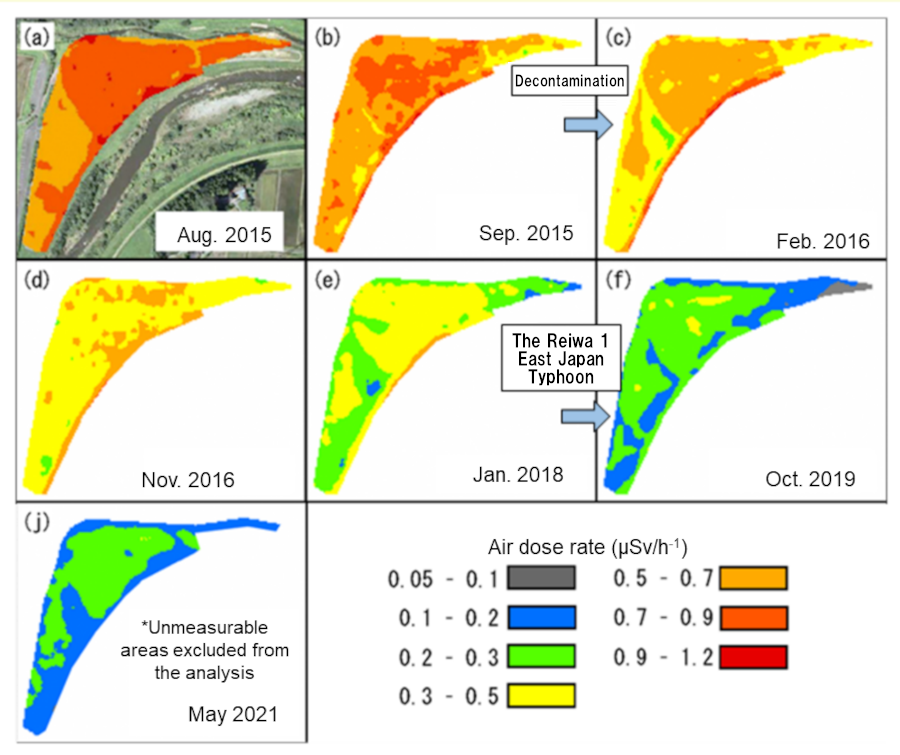Assessment of Exposure Doses and Decontamination
(2024)
QIs there any chance that decontaminated areas may be contaminated again, increasing the air dose rates?
AFukushima Prefectural Centre for Environmental Creation conducted a survey on riverbeds and public facilities (facilities in urban areas and forest parks) after decontamination, and it was found that the air dose rates did not increase and they were on a decline.
Forests upstream of rivers are not decontaminated, which raised concern that the decontaminated riverbeds may be contaminated again by the earth and sand flowing down from upstream.
For this reason, air dose rates were continuously measured at two decontaminated riverbeds on Hamadori and one decontaminated riverbed on Nakadori, and the air dose rates at all sites showed a decline (Fig. 1). During the survey, a large flood was caused by a typhoon, but the air dose rates went down due to shielding by the accumulated earth and sand of low radioactive material concentrations and the erosion of accumulated earth and sand.
In land areas as well, there was concern about recontamination due to the movement of earth and sand caused by heavy rain. Therefore, air dose rates at five decontaminated public facilities (community centers in urban areas and forest parks, etc.) were continuously measured. At all the facilities, the air dose rates were on a decline, and no increase was observed in the air dose rates despite heavy rain brought by typhoons.

Fig.1 Changes in the air dose rate on the riverbeds of the Nitta River
Related articles
- When it rains, does radioactive cesium flow out of forests with soil? 【137Cs flow in heavy rain】
- Do dose rates in riverbeds increase after heavy rains? 【Changes of air dose rate in heavy rain】
- How much will the air dose rate be reduced by decontamination in the Specified Reconstruction and Revitalization Base areas? 【Example of analysis】
- Urban areas have been decontaminated. Is there any residual cesium there?
